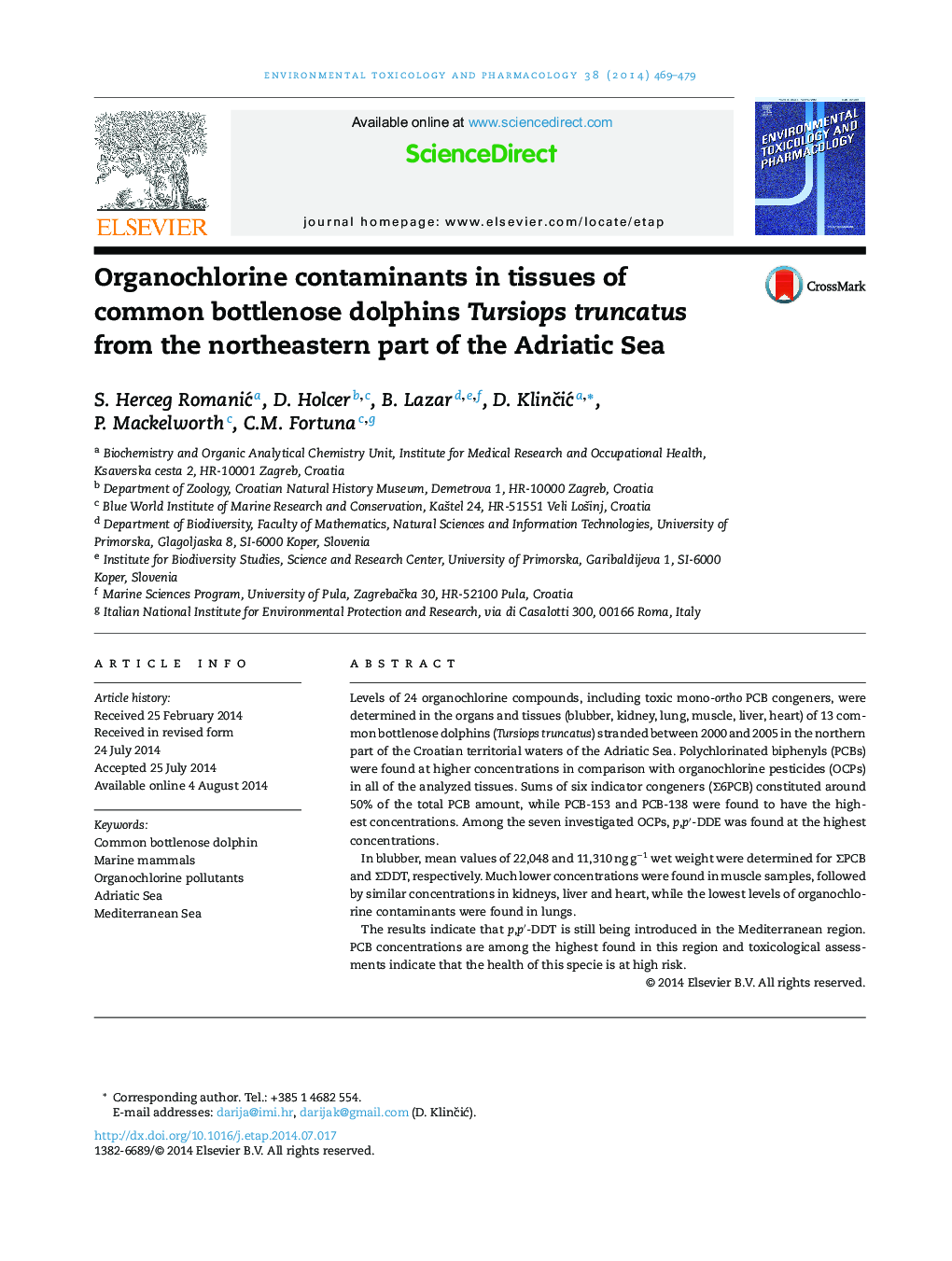| Article ID | Journal | Published Year | Pages | File Type |
|---|---|---|---|---|
| 2583606 | Environmental Toxicology and Pharmacology | 2014 | 11 Pages |
•The results indicate continued input of p,p′-DDT in the Mediterranean region.•ΣPCB concentrations are higher than most recently measured PCB levels in dolphins.•TEQ values indicate that the health of dolphins is at risk.
Levels of 24 organochlorine compounds, including toxic mono-ortho PCB congeners, were determined in the organs and tissues (blubber, kidney, lung, muscle, liver, heart) of 13 common bottlenose dolphins (Tursiops truncatus) stranded between 2000 and 2005 in the northern part of the Croatian territorial waters of the Adriatic Sea. Polychlorinated biphenyls (PCBs) were found at higher concentrations in comparison with organochlorine pesticides (OCPs) in all of the analyzed tissues. Sums of six indicator congeners (Σ6PCB) constituted around 50% of the total PCB amount, while PCB-153 and PCB-138 were found to have the highest concentrations. Among the seven investigated OCPs, p,p′-DDE was found at the highest concentrations.In blubber, mean values of 22,048 and 11,310 ng g−1 wet weight were determined for ΣPCB and ΣDDT, respectively. Much lower concentrations were found in muscle samples, followed by similar concentrations in kidneys, liver and heart, while the lowest levels of organochlorine contaminants were found in lungs.The results indicate that p,p′-DDT is still being introduced in the Mediterranean region. PCB concentrations are among the highest found in this region and toxicological assessments indicate that the health of this specie is at high risk.
